Normally I like to do these at the beginning of the year and not halfway through it, but somehow they completely skipped my mind! So, before we get too much further into the year (or let it pass by completely), let’s look at what research has been added for the various supplements I’ve covered here on Climbing Nutrition.
Beta-Alanine
2017 brought us seven new articles, six new studies and one meta-analysis. Most of the studies were your bread-and-butter performance studies,1–5 while one study looked at the effect of two different dosing protocols on intramuscular carnosine content.6
Of the performance studies, three found consistent results with what we’ve already shown (that beta-alanine improves power endurance, perceived exertion, and/or performance within the 30 to 90 second exercise window)1,2,4 and two found no improvement.3,5 For the two that showed no improvement, one used primarily 30 second exercise tests, so we would not expect to see improvement;5 the other used repeated 30-meter sprints, where we should hypothetically see at least some improvement, but actually both groups did worse than when first tested (so maybe there was something else wrong, because it’s not normal to worsen after training!).3
The dosing protocol study found that supplementing with 12 grams of sustained-release beta-alanine increased intramuscular carnosine levels quicker than using only 6 grams,6 though since the 6-gram dose was taken for 4 weeks while the 12-gram dose was taken for only two, the 6-gram group still wound up with higher total intramuscular carnosine. This suggests that we probably can’t actually use 12 grams in a single day, but can use more than 6. It also suggests the “loading phase” may be longer than a week. The authors also noted that the two beta-alanine groups experienced similar rates of paresthesia, but did not compare the intensities, so it’s hard to say whether this actually means anything since most people will begin to experience paresthesia beginning at a lowly 800 milligrams with a growing intensity of experience as dose increases.
The meta-analysis found beta-alanine significantly improved exercise capacity within a 30-second to 10-minute window.7 Nothing new here!
Overall, this new research mostly reinforces what we already know and adds only to our knowledge of dosing, in which it’s suggested that we may need more time and a greater amount of beta-alanine in order to maximize our intramuscular stores as rapidly as possible.
Conclusion: Beta-alanine remains a recommended supplement.
Caffeine
I’m not going to add any updates to caffeine because none of them actually change anything; caffeine is one of the best-studied ergogenic aids, and at this point it’s extremely unlikely we’ll ever discover that it’s not. Furthermore, a massive number of studies are done on caffeine yearly (my original supplement guide used 99), and the amount of time it would take to go through all the new studies is daunting—especially considering, again, that nothing is likely to change (and we’d all have heard about any study that did overturn our decades of cumulative knowledge).
There certainly are interesting studies being done on caffeine, but I think they mostly fall outside of this site’s interest. They’re studies on how caffeine modulates certain effects; they’re interesting, but add more to our academic knowledge than our performance nutrition knowledge.
Conclusion: Caffeine remains (and likely always will) a recommended supplement.
Citrulline Malate
There were five new studies on citrulline malate, four of which examined its effects on performance8–11 and one which examined its effects on blood lactate (which could be seen as a performance-related metabolite).12
Of the performance studies, three noted no benefit in performance.8–10 One study noted an increase in total reps for upper- and lower-body exercises.11 All of these studies suffer from the major (and seemingly ever-present within the citrulline malate research world) problem of having far too few participants with a low of only nine in one study and a high of only fifteen.
The study examining the effects of citrulline malate on blood lactate noted more rapid clearance of blood lactate in the citrulline malate group.12 Since the clearance of blood lactate correlates with post-exercise oxygen recovery, this could indicate greater oxygen delivery, hypothetically through improved nitric oxide production (the purported mechanism of citrulline malate).
As more studies pile up, the potential benefits of citrulline malate seem to be shrinking. It’s still possible there’s a benefit, but if there is a benefit it’s likely small. What we really need are some larger studies. I’m not even asking for a 100+ group here (though that would really be nice!), even a (methodologically sound) 50+ participant study would be more enlightening that our current crop of 8-15 participant studies. Maybe this is the year…
Conclusion: Citrulline malate is downgraded from a recommended supplement to a neutral/weakly recommended supplement. It still adds a nice sour flavor to sports drinks, so if you dig that, that’s reason enough.
Creatine
As with caffeine, creatine’s ergogenicity is pretty much locked in—there’s little chance we’ll reverse the body of findings from past studies and discover creatine does not improve power. However, this main benefit of creatine is not what is in contention for climbers, so for this year’s update and moving into the future, I will focus my search for creatine on articles that may further illuminate creatine’s effect in climbers.
In light of this, of the seventeen new articles on creatine (or, specifically, creatine monohydrate, the most popular supplemental form) published this year, I will only discuss two: one on creatine’s effects on cartilage and inflammation,13 and one on creatine’s effects on learning and memory.14
The first study, on cartilage and inflammation, was negative—creatine did not affect (either positively or negatively) inflammation, cartilage degeneration, or knee strength in patients with knee osteoarthritis.13 This isn’t too surprising as creatine is not known as an anti-inflammatory. While there may be a passive anti-inflammatory effect (hypothetically because stronger muscles would transfer less load to cartilage or connective tissue), it’s a stretch to imagine this would be anything potent.
The second study, on learning and memory,14 is more interesting in some ways but also doesn’t give us a lot to go on because it was a mouse study. Its main finding was that female mice supplemented with a 3% creatine diet had an expanded spatial memory compared to those on a 1% or 0% creatine diet. We know creatine is found in the brain and appears to be related to memory and cognition, so this isn’t too surprising of a result—but whether it actually means something in the real world is questionable. If it has a real-world effect, though, then this would potentially mean better spatial memorization of the holds of a given route.
Conclusion: Creatine remains a recommended supplement.
Glucosamine & Chondroitin
I wrote last year that I would probably do the yearly review for these supplements differently since the studies that are inevitably published every year tend to be low-quality. It was no different this year, so I’ll cite only a single meta-analysis that was published.15
The new meta-analysis concluded with the same conclusion we routinely see: “widely used supplements such as glucosamine and chondroitin were either ineffective or showed small and arguably clinically unimportant treatment effects.” They were also ineffective at relieving pain in a clinically important manner.
There’s really no reason for a climber to take these supplements.
Conclusion: Glucosamine and chondroitin remain NOT recommended supplements.
Siberian Ginseng
There were no new relevant studies for Siberian ginseng. Siberian ginseng is poorly studied in general in terms of athletic performance, with most recommendations being based on poor-quality studies or anecdotal evidence.
Conclusion: Siberian Ginseng remains a NOT recommended supplement.
Sodium Bicarbonate
There were five new relevant studies done on sodium bicarbonate, which can be roughly broken into two categories: the effect of sodium bicarbonate on post-exercise levels of acidosis,16,17 and measuring the effect of sodium bicarbonate.18,19
The new studies show that ingesting sodium bicarbonate before exercise significantly attenuates post-exercise levels of acidosis.16,17 This could potentially improve performance during exercise that consists of multiple rounds—for example, a bouldering competition. The first study also found improved maximal performance, potentially due to increased levels of anaerobic glycolysis made possible by decreased muscular acidosis.16
The studies on measuring sodium bicarbonate further seek to find an effective way to dose the supplement.18,19 We know that individuals respond differently to sodium bicarbonate—that is, the time-to-peak levels of sodium bicarbonate after ingestion differ greatly (from 10-85 minutes!)20—so finding a convenient way to measure this peak level would be useful. I can’t say they’re found a convenient way yet, but we can say that measuring peak bicarbonate levels is likely better than measuring peak pH levels,18 and that if we measure blood bicarbonate levels for their peak then we can use a smaller dose of sodium bicarbonate and get the same results as a larger dose.19
Conclusion: Sodium Bicarbonate remains (from last year) a NOT recommended supplement, unless you have a way to measure when your blood bicarbonate levels peak.
That’s This Year’s Supplements, In Review
Nothing has really changed from last year, but that’s how things go in science; change is the slow, incremental addition of knowledge, with minor changes in protocol such as timing and dose more likely to occur than a complete revisal. Furthermore, many of the supplements I’ve covered on this site are thoroughly studied, and it’s unlikely my recommendation will ever change for them unless something revelatory is learned. The most change we see this year is with citrulline malate, which isn’t showing as much promise as it used to (particularly since it appears to never be studied with enough participants for a decent level of statistical power).
As I did for a couple supplements this year, I’ll likely focus in my updates for most supplements in future years. At this point, it’s not particularly important to make note of every new study showing the performance-enhancing ability of beta-alanine or creatine or caffeine, but if a study sheds relevance on how they affect climbing itself then that would be noteworthy. Of course, very few studies are done on climbing, so a bit of luck and creative searching may be in order next year!
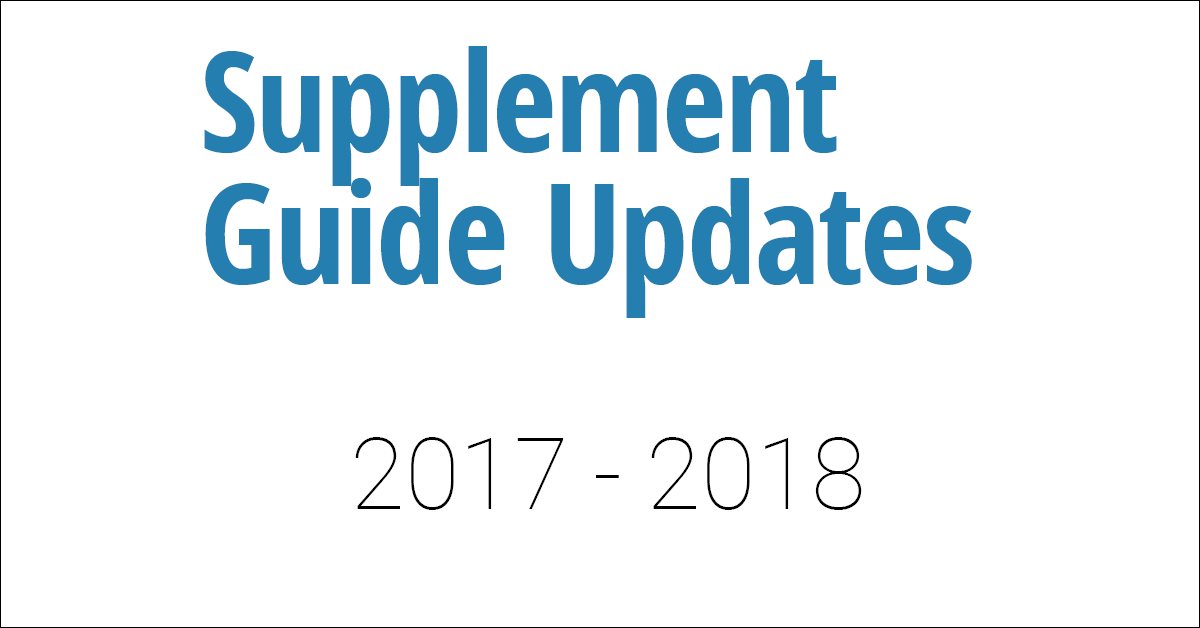

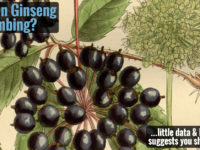

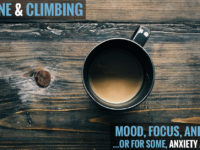
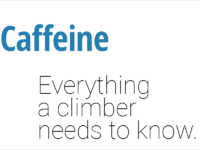
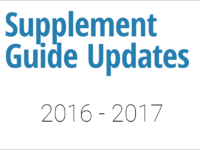
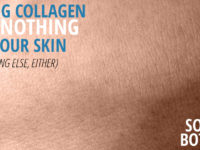







Hello, Mr. Rigby:
I’m looking to try multi-vitamin and multi-mineral supplements and wonder if you have any suggestions of companies for me to consider?
Previously, I’ve taken multi-vitamin/-mineral supplements from companies like Garden of Life, New Chapter, and The Synergy Company. Plus, I’ve taken individual products (e.g., B1, C, D, etc.) from companies like Biotics Research, Thorne, and others.
Aside from the doses listed on the labels of these individual products, do you have any idea if selecting one manufacturer over another really matters?
Thank you for the consideration.
John